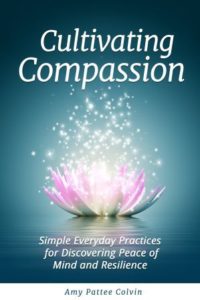At one point or another, all of us experience anxiety. How we choose to respond to anxiety determines whether we sink into disaster fantasies or rise to a place of peace.
One reason I love to teach deep breathing techniques and qigong is because of the benefit I’ve seen in my own life while practicing these learnable skills.
Deep Breathing and Qigong in Action
This story is a perfect example of how practicing these techniques reduced my anxiety. In late April, I headed to Peru to facilitate a meditation and qigong retreat. I used Alaska flight miles, a first for me, and my routing was a bit odd. My first leg was on Alaska Airlines, and my next two legs—after a 13-hour overnight layover—were on American, and so I decided to stay in a hotel for the night.
One joy of modern technology is the ability to use airline apps. When I started my trip, both airline apps reflected all three legs of my journey. After I checked into my hotel at the end of the first leg, I looked at both apps, and both reflected the two onward legs.
In the morning, after a sound night’s sleep. I rechecked the apps, to be sure my flight time hadn’t changed. My flights were gone.
The Alaska Airlines app said, thanks for flying with us, your journey is complete. Furthermore, the American Airlines app didn’t even acknowledge my booking code. Ugh.
In times past my heart would begin racing. My hands would start shaking a bit and my mouth would go dry. Worst of all my brain would begin to spin all kinds of disaster fantasies rather than try to come up with practical solutions. Any of you who have ever experienced anxiety might recognize these symptoms.
However, over years of practicing deep breathing, qigong, and meditation, I short-circuited the anxiety and instead put my emotional energy into problem-solving. After a few deep breaths and 30-seconds of intentionally shaking my body to transform tension into vitality, my first problem-solving step was to check the website for American airlines. Again, no recognition of my booking code.
So, it was time for more deep breathing which helped me get settled into my body and out of my brain. I called American’s customer service line and learned it would be a 15-minute wait. Ugh.
I put my phone on speaker and began moving through a series of flowing qigong moves which helped me focus on my breath and my body.
Qigong also gave me a way to move energy throughout my body rather than feeling amped up with adrenaline.
After about 12 minutes I picked up my phone, swiped something, and accidentally disconnected the call. Ugh. Welcome to being human.
Time for a couple more deep breaths. Then I called Alaska airlines. After all, this was the company through which I’d first booked my flights. I immediately spoke to a representative, and he told me that he saw the flights and that everything looked okay. He suggested I head to the airport as soon as possible so I could confirm everything with American.
So far, this was all working out well. I managed my anxiety with intentional deep breathing and qigong movement. I chose not to create disaster fantasies, and I responded to the situation rather than reacting to it. Upon arriving at the ticket counter, the helpful agent said, “You’re heading to Miami, correct?” Um, no. I told him that my final destination was Lima. He paused and furrowed his brow. He said, “give me a moment,” and he picked up the phone.
I guess it was time for more intentional breathing. I settled my mind, breathed into my belly, and kept a smile on my face. After a few minutes, the agent said, “It’s all sorted out now. For some reason, the system disconnected your flights, but you’re good to go now.”
He printed my boarding passes and tagged my luggage to Lima.
I had extra time at the airport and found a quiet corner in which to practice a bit more qigong and settled into a seated meditation. The rest of the day went easily, and I arrived in Lima with no more hiccups. I met my group the next morning, and we spent the next ten days exploring the beautiful landscapes and cultures of the Sacred Valley and Machu Picchu.
How Deep Breathing and Qigong Reduce Anxiety
Modern life is stressful, and anxiety is a natural response to stress. Most of us feel we have too much to do and to little time to get it done. Or, as in the case of the story above, anxiety arises from situations out of our control. Generally, we prefer the known to the unknown. Often we are resistant to change. A barrage of thoughts that arise from being overburdened or from unexpected change disturbs a calm state of mind.
Choosing where to place your attention is the first step to managing your mind. Intentionally focusing on diaphragmatic breathing provides an anchor for your brain and helps derail spinning thoughts which in turn reduces anxiety. Deep breathing also enables you to connect to your body. Becoming aware of your breath and body eases your mind.
The next step incorporates movement. Bringing intentional flowing action movement into your body while coordinating with slow deep breaths is the essence of qigong. When we feel at peace and internally relaxed, we are in a state of flow. Flow is the opposite of anxiety and stress. Qigong and deep breathing help the body find a place of balanced tranquility where the mind is at peace and the body is relaxed.
Two Simple Breathing and Qigong Exercises
Four-Part Breathing Exercise
If you’re not familiar with diaphragmatic or belly breathing, read this post about how to breathe while meditating to learn more.
If you’re already familiar with deep breathing, try out this simple but powerful exercise.
Sit or stand comfortably. Drop your gaze or close your eyes, whichever is more comfortable for you. Briefly focus on relaxing all of your muscles (including your tongue).
- Breathe deeply and slowly into your belly for a count of four.
- Pause and hold your breath for a count of four.
- Exhale fully for a count of four.
- Pause again for a count of four.
Repeat as often as you wish. If you find your mind re-focusing on what is causing the current anxiety, gently return your attention to your breath and body. As stress and tension begin to ebb out of your mind, let your breath wander on its own without paying any intentional attention to it. Notice the calm that comes as you place your focus on long, slow, deep, even breaths.
Transforming Tension into Vitality Qigong
This exercise transforms tension into vitality.
It can be used anytime but is very useful when you want to shift strong emotions (anxiety, anger, frustration, excitement) into a place of calm.
Sometimes, you’ll even see high-performance athletes moving this way as well (think of the swimmer Michael Phelps before he got on the starting block), though I don’t know if they consciously consider this as transforming tension into vitality.
Get in position
- Stand with your feet hip-width apart, toes pointing straight ahead. Your legs are strong, but your knees are not locked; they have a gentle softness to them.
- Visualize your tailbone reaching down toward the earth and the crown of your head reaching into the sky above. Your hands hang softly by the sides of your thighs.
- Breathe into your belly and continue breathing deeply during the shaking below.
Shake
- Begin lightly shaking your wrists as if you’re shaking water drops off your fingertips.
- Bend your elbows and get them involved in the shaking process.
- Bring your shoulders into it.
- Relax at the ankles, knees, and hips and get them involved in the shaking process.
- Bring your tailbone in and your neck.
- Bounce softly on your heels, striking the ground with them lightly.
- Continue breathing deeply. Shake as long as you’d like.
When you’re ready, bring your body to stillness with your hands gently hanging by your thighs. Notice the sense of tingling and warmth in your hands? That is the qi you’ve just activated through the shaking process.
To finish the exercise, visualize standing under a warm waterfall. Allow the water to flow gently from the top of your head down the front, back, and sides of your body. This nurturing, warm water washes away any stagnant energy or emotions that the shaking has dislodged, leaving you to feel relaxed, at peace, and content.
I hope these simple tips help you reduce anxiety and increase your peace of mind. If you’d like to learn more, join an upcoming BodyMind IntelliSense course or my free Zoom qigong classes. If you enjoy traveling, step away from your daily routine and join me for an International Meditation Retreat. We’ll spend time daily practicing deep breathing, qigong, and compassion meditation.










